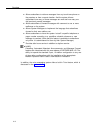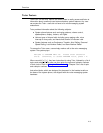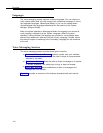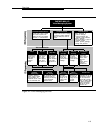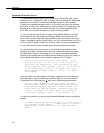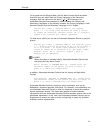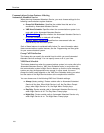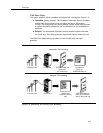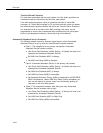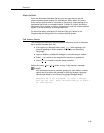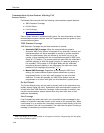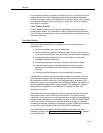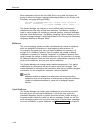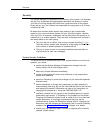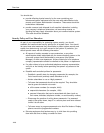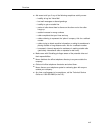
Overview
Transfer Return Extension
For extensions associated with the mail system unit, this option specifies how
unanswered calls are transferred by the voice mail system.
If the mail system transfers a call to an extension that has no Voice Mail
coverage, or if Voice Mail coverage is Off, and that extension does not answer,
the communications system transfers the call to the Transfer Return Extension.
For extensions that do not have Voice Mail coverage, this option can be
programmed to ensure that unanswered calls transferred by the mail system
return to the designated extension, where they ring until answered.
Automated Attendant Service Scenarios
The following sample scenarios illustrate typical ways in which Automated
Attendant Service is set up with the communications system features:
■
■
■
Case 1: The receptionist is the primary call handler. Automated
Attendant Service handles overflow.
a.
b.
c.
Use Group Call Distribution (#206) Setting 1 to identify the lines to be
answered by Automated Attendant Service.
Set VMS Hunt Schedule (#507) to Always.
Set VMS Hunt Delay (#506) to Delayed.
Case 2: Automated Attendant Service is the primary call handler.
a.
b.
c.
d.
Use Group Call Distribution (#206) Setting 1 to identify the lines to be
answered by Automated Attendant Service.
Set VMS Hunt Schedule (#507) to Always.
Set VMS Hunt Delay (#506) to Immediate.
Set Automatic Extension Privacy (#304) to Assigned for all PARTNER
MAIL VS extensions. (When VMS Hunt Delay is set to Immediate, you
can use this feature to prevent users from accidentally picking up
calls sent to the voice mail system.)
Case 3: The receptionist answers calls during the day; Automated
Attendant Service answers calls at night.
a.
b.
c.
Use Group Call Distribution (#206) Setting 1 to identify the lines to be
answered by Automated Attendant Service.
Set VMS Hunt Schedule (#507) to Night Only.
Set VMS Hunt Delay (#506) to Immediate.
1-10



